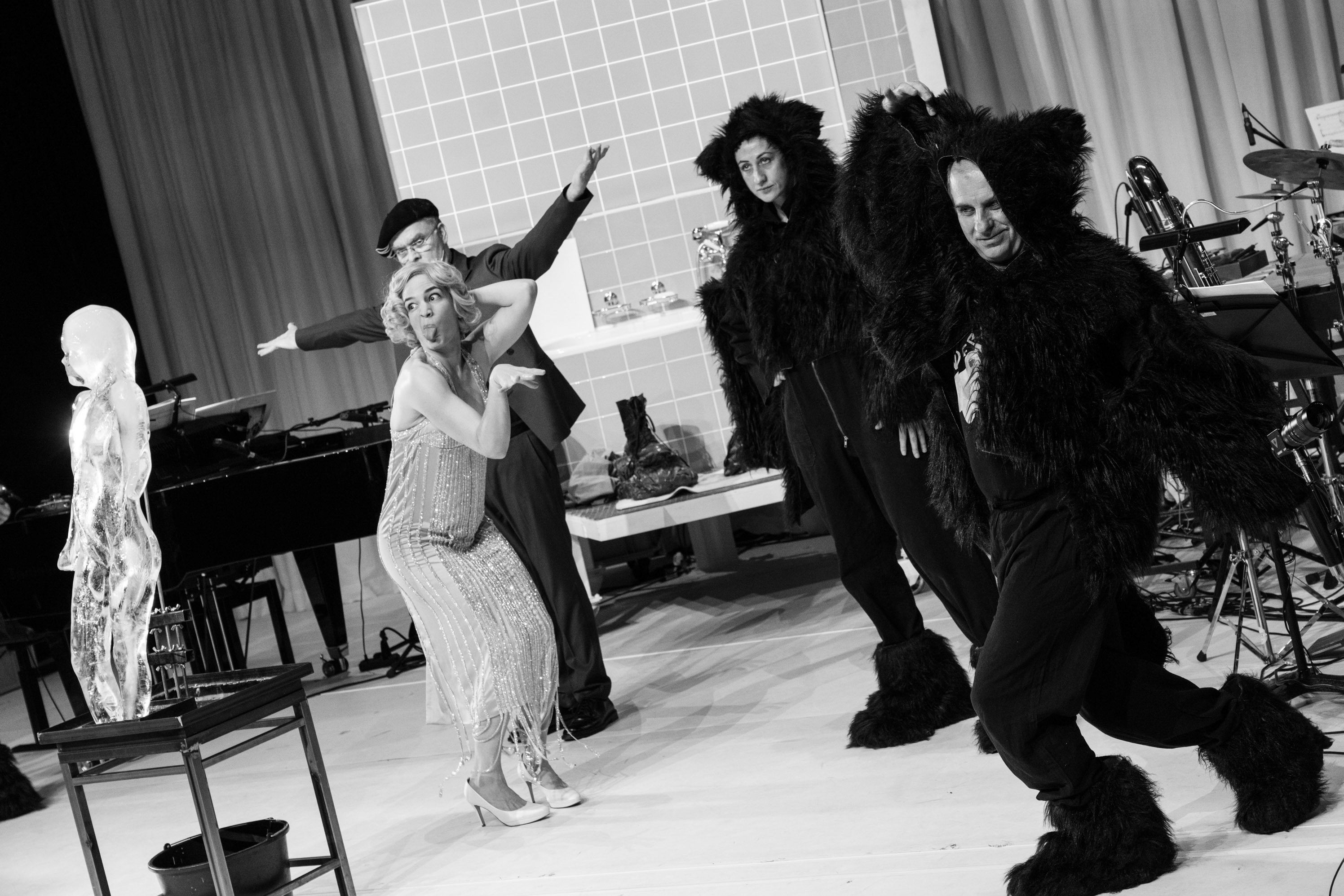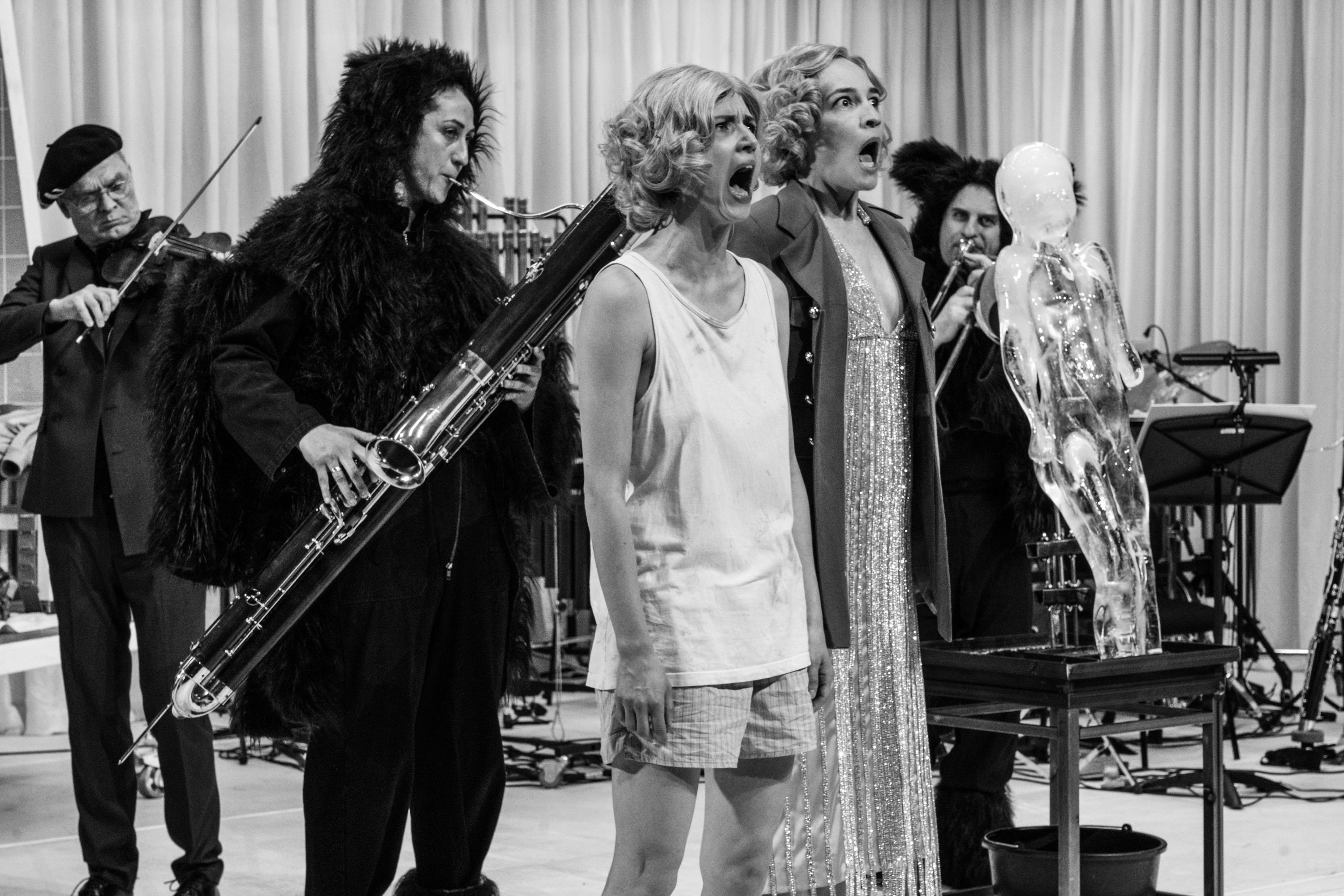Lee Miller in Hitler's Bathtub
Language: English
Opera
from 16
Lee Miller in Hitlers Bathtub' is neither a historical nor biographical portrait of artist Lee Miller and should be seen as faction; combining actual historical events with fictional elements. The interpretation of the Lee Miller character is based on artistic choices and Jan Lauwers; vision and may differ from historical documentation or biographies. Some dialogue, situations and interactions are invented.
This production is not officially sanctioned by the Lee Miller Archives.
Note: Some scenes contain disturbing images from contexts of crimes against humanity, suicide and abuse
Cast on
6. June 2025
5 more dates
Lee Miller in Hitler's Bathtub
More dates
About the Production
In a world premiere, Jan Lauwers, Kate Lindsey and the Needcompany bring the life and world of one of the most remarkable female artists of the 20th century to the opera stage at NEST: Lee Miller.
The opera is a portrait of this woman who said at the end of her life that she felt like a cow that had been milked dry.
The American was a photographer, a top model in New York, a surrealist in Paris and a war correspondent for the US Army during the Second World War. She was a woman who stood in the shadow of many men. So the portrait is not just of Lee, but of so many women in the history of art who have been gagged.
Jan Lauwers’ oeuvre as a writer and theatre maker is characterised by strong female roles. One woman who has fascinated him for a long time is the American artist Lee Miller. (War-) photographer, journalist, top model, cover girl and alcoholic. Abused, vilified, adored and discarded. And then there is this one photo: 'Lee in Hitler’s bathtub' by David E. Scherman in 1945. What was going through Lee’s mind when she entered Hitler's apartment and decided to wash herself in the devil’s bath? The text begins at the moment when Lee Miller stands in front of Hitler’s bathtub in her stinking clothes, which still reek of the corpse smells from Dachau.
Jan Lauwers: The libretto does not tell the story of Lee Miller from birth to death. Jan Lauwers is fascinated by the moral lack of clarity of Lee as a woman in a patriarchal society, in which power games are ruthlessly played. What does it mean for Lee that she chose to take a bath in the monster’s bathtub? What does it mean moreover to let her photo be taken there? The libretto 'Lee Miller in Hitlers Bathtub' is a portrait of a woman who at the end of her life felt like a cow who had been milked dry. A woman in the shadow of many men. Famous men. Notorious men. Jan Lauwers wanted to make a portrait that was no longer that of Lee but of so many women in the history of art who have been gagged.
"The composition of the five-piece ensemble of percussion, strings, trombone and contrabassoon is driven by the search for the moment in which the autonomous instrument and its sound become corporeal and the instrumentalist becomes corporeality. it is slogging through the dirt, not floating above the clouds." (Maarten Seghers)
The American artist Lee Miller has long fascinated the Belgian theater maker Jan Lauwers as one of the strong female figures who have had a decisive influence on his work: Photographer, top model in New York, surrealist in Paris, war correspondent for the US Army during the Second World War. Lauwers describes Lee Miller as "a woman in the shadow of many men". Few people today know of her artistic collaboration with Man Ray, the pioneer of experimental photography; she is more likely to be remembered as the wife of British surrealist Roland Penrose or as a model for Pablo Picasso. However, one of her pictures is the most famous: "Lee Miller in Hitler's Bathtub", taken by Time-Life photographer David E. Scherman, with whom Miller worked closely. The two had documented the horrors of the concentration camp in Dachau and then traveled to Munich. Shortly after Hitler's suicide in Berlin on April 30, 1945, they entered his apartment on Munich's Prinzregentenplatz. The photo was taken there.
“The text,” says Jan Lauwers, “begins at the moment when Lee Miller is standing in front of Hitler's bathtub in her stinking clothes, which still smell of the corpse of Dachau.” Lauwers is interested in the ambiguity of Lee Miller's figure as a woman and artist in a patriarchal society. Some of her pictures are still known today - better known than their creator. After her marriage to Roland Penrose and the birth of her son, Miller hardly ever worked as a photographer. A post-traumatic stress disorder resulting from the events of the war is suspected to be behind her later alcoholism.





